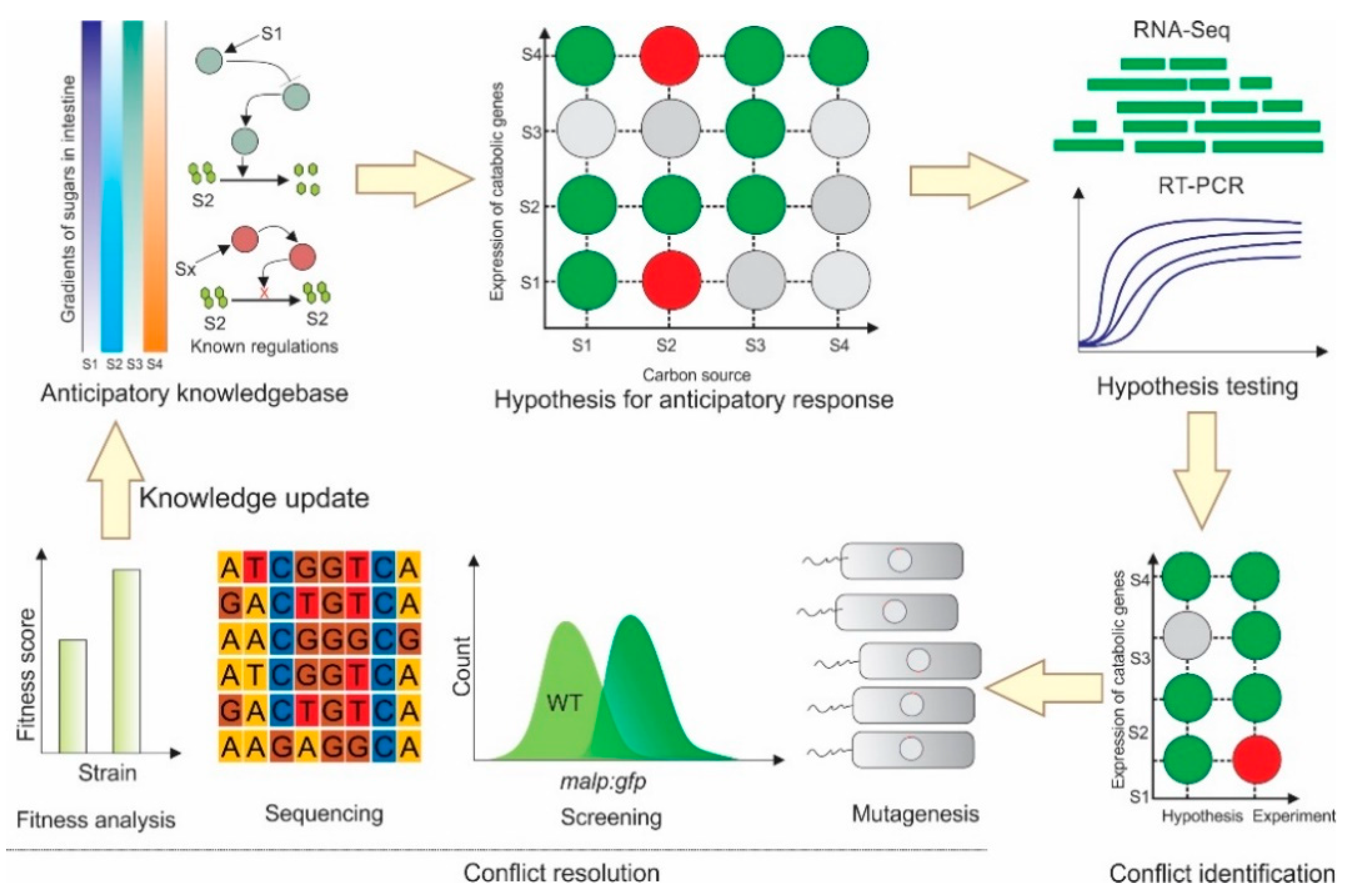New article in International Journal of Molecular Sciences
A new publication from Dr. Navneet Rai, Dr. Minseung Kim, and Dr. Ilias Tagkopoulos, about Understanding the Formation and Mechanism of Anticipatory Responses in Escherichia coli.

Abstract: Microorganisms often live in complex habitats, where changes in the environment are predictable, providing an opportunity for microorganisms to learn, anticipate the upcoming environmental changes and prepare in advance for better survival and growth. One such environment is the mammalian intestine, where the abundance of different carbon sources is spatially distributed. In this study, we identified seven spatially distributed carbon sources in the mammalian intestine and tested whether Escherichia coli exhibits phenotypes that are consistent with an anticipatory response given their spatial order and abundance within the mammalian intestine. Through RNA-Seq and RT-PCR validation measurements, we found that there was a 67% match in the expression patterns between the measured phenotypes and what would otherwise be expected in the case of anticipatory behavior, while 83% and 0% were in agreement with the homeostatic and random response, respectively. To understand the genetic and phenotypic basis of the discrepancies between the expected and measured anticipatory responses, we thoroughly investigated the discrepancy in D-galactose treatment and the expression of maltose operon in E. coli. Here, the expected anticipatory response, based on the spatial distribution of D-galactose and D-maltose, was that D-galactose should upregulate the maltose operon, but it was the opposite in experimental validation. We performed whole genome random mutagenesis and screening and identified E. coli strains with positive expression of maltose operon in D-galactose. Targeted Sanger sequencing and mutation repair identified that the mutations in the promoter region of malT and in the coding region of the crp gene were the factors responsible for the reversion in the association. Further, to identify why positive association in the D-galactose treatment and the expression of the maltose operon did not evolve naturally, fitness measurements were performed. Fitness experiments demonstrated that the fitness of E. coli strains with a positive association in the D-galactose treatment and the expression of the maltose operon was 12% to 20% lower than that of the wild type strain.
Reference: Rai, Navneet, Minseung Kim, and Ilias Tagkopoulos. “Understanding the formation and mechanism of anticipatory responses in Escherichia coli.” International Journal of Molecular Sciences (2022). doi: 10.3390/ijms23115985 (link)